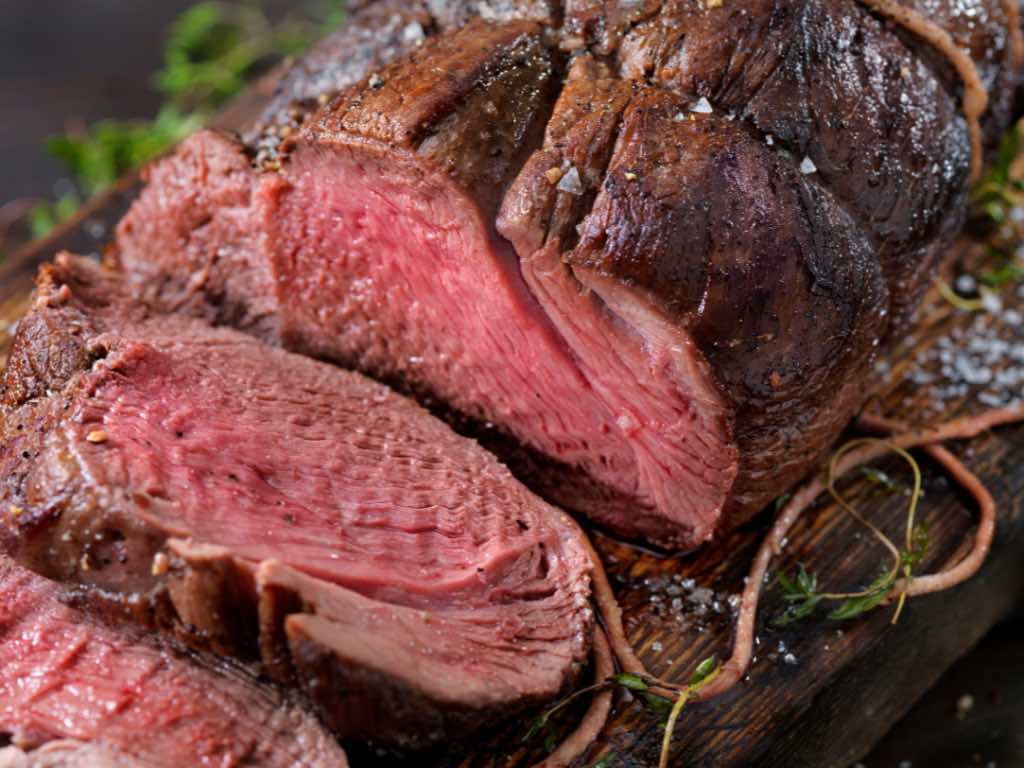
How to Cook Elk Steak: Tips, Recipes, and Health Benefits
|
|
Time to read 5 min
Welcome to One Stop Halal!
Written by: Najma A.
|
|
Time to read 5 min
Regarding wild game meat, elk steak is one of the most flavorful, tender, and nutritious options. Whether you're a seasoned hunter or a home chef looking to explore new culinary adventures, elk offers a distinctive experience that's hard to beat. This blog delves into what makes elk steak unique, its nutritional benefits, how to cook elk steak, and some excellent cooking techniques to help you savor every bite.
If you're buying steak for the first time, there are a few things to keep in mind:
Elk steak's leanness is both a blessing and a challenge. On one hand, it means the meat is tender and flavorful without excess fat. On the other hand, lean meat can dry out quickly if overcooked, so proper preparation is critical.
Because elk steak is naturally lean, marinating it can enhance its flavor and juiciness. A simple marinade using olive oil, vinegar, garlic, and herbs works beautifully to tenderize the meat and infuse it with subtle flavors. For added depth, you can also experiment with soy sauce, and balsamic vinegar.
Here's a basic marinade recipe for elk steak:
Marinate the elk steaks for at least 2-4 hours in the refrigerator or overnight for maximum flavor. Be sure to bring the steak to room temperature before cooking to ensure even cooking.
Grilling is one of the best methods to cook elk steak, as it brings out the rich, natural flavors of the meat without overwhelming it. Here are a few tips for grilling the perfect elk steak:
Consider cooking elk steak sous vide for precise temperature control and maximum tenderness. This method involves sealing the steak in a vacuum bag and cooking it in a water bath at a specific temperature.
When serving elk steak, pairing it with the right sides and flavors can enhance its rich, gamey profile. Here are a few classic pairings that complement the natural flavors of elk steak:
These pairings enhance your elk steak experience, creating a well-rounded and flavorful meal.
Welcome to the Home of Halal Elk Meat. We carry various elk meat cuts that are hard to find elsewhere. We deliver to your doorstep anywhere in the United States within 1-2 business days.
Elk steak offers a unique culinary experience, combining the rich flavor of wild game with the health benefits of lean, high-protein meat. Whether you grill, pan-sear, or sous vide your elk steak, the key is to cook it carefully to preserve its tenderness and avoid overcooking. With the right sides and sauces, elk steak can transform any meal into a gourmet feast while supporting sustainable and ethical food choices. So, whether you're a wild game enthusiast or simply looking to try something new, elk steak is a delicious, nutritious, and versatile option that's worth exploring in your kitchen.

© 2025 One Stop Halal, Inc.